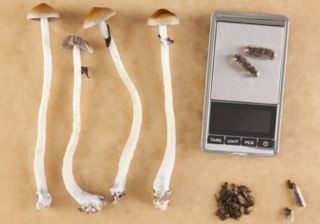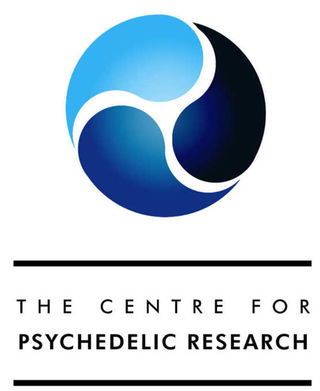Psychedelic-Assisted Therapy
A New Review of Psilocybin Microdosing Cools the Hype
An overview of psychedelic microdosing finds a lack of scientific consensus.
Posted July 17, 2019 Reviewed by Gary Drevitch
Microdosing psychedelics is a hot-button topic. In recent months, there's been a wave of news coverage surrounding the potential life-changing power of ingesting various doses of psilocybin ("magic mushrooms"), lysergic acid diethylamide (LSD), or N, N-dimethyltryptamine (DMT).

As a science reporter and blogger, I've contributed to some of this media buzz by writing posts about the possible upsides and downsides of taking everything from "micro" to "mega" doses of any psychoactive substance. (See, "Psychedelic Microdosing: Study Finds Benefits and Drawbacks," "This Is Your Brain on Microdoses of Psilocybin," "One Mystical Trip Can Trigger Lifelong Benefits.")
Any discussion of psychedelics and "microdosing" tends to evoke strong emotions; people seem to be especially passionate about their subjective opinions and anecdotal observations regarding psilocybin. Unfortunately, when it comes to microdosing, there is relatively little scientific evidence to support (or discredit) anecdotal claims of the possible benefits (or detriments) associated with taking small, regular doses of a psychoactive drug like psilocybin.
Because there are so many unknowns, I was thrilled to see a news release from Imperial College London yesterday with the candid headline: "Science of Microdosing Psychedelics 'Remains Patchy and Anecdotal,' Says Review."
In April of 2019, Imperial College London launched the world's first "formal centre" for empirical research dedicated to psychedelics. In terms of debunking myths and addressing the lack of "good science" regarding psychedelic substances, this centre is a giant leap in the right direction.

The latest overview by a team of researchers from The Centre for Psychedelic Research and Maastricht University, "Microdosing Psychedelics: More Questions Than Answers? An Overview and Suggestions for Future Research" was published July 14 in the Journal of Psychopharmacology.
The eye-opening review focuses primarily on psilocybin, targets ongoing questions that need to be addressed by scientific studies, and offers some possible guidelines for future research. The first author of this paper is Kim Kuypers from Maastricht University in the Netherlands. David Nutt, Director of the Neuropsychopharmacology Unit in the Division of Brain Sciences at Imperial College London, is the senior author.
In a statement, Kuypers said, "This review is timely as a lot of hope is generated by positive media reports about alleged effects of microdosing. Patients might feel attracted by those reports to try it but may actually not be helped by it. We try to emphasize the lack of scientific proof that microdosing is indeed effective in combating certain symptoms and hope that this will give impetus to new lines of research in this area."
"Despite so much interest in the subject, we still don't have any agreed scientific consensus on what microdosing is—like what constitutes a 'micro' dose, how often someone would take it, and even if there may be potential health effects," Nutt said in a statement. "Researchers working in the area of psychedelics regularly receive requests from the media asking about microdosing. We hope that this critique will provide answers to all these questions in the future as well as providing a framework for research."
This comprehensive "microdosing psychedelics" overview covers so much ground that digesting all of the paper's content and extensive reference lists requires a significant commitment. Nevertheless, I strongly encourage anyone currently self-administering psychedelics in a microdose (or considering doing so) to carve out some time to read the entire 15,000-plus word, open-access paper.
Here, I'll attempt to distill the overview into a user-friendly format. The introductory section of the review is followed by 11 questions/answers and four expert critiques. Click on the links (in blue) to each question below to read the full answer directly from the review.
Microdosing Psychedelics: 11 Questions & Answers from Kuypers et al. 2019
- What does microdosing mean?
- What microdosing schedules have been used?
- What controlled studies have been done so far?
- Are there any relevant preclinical studies?
- What is the pharmacology of psychedelics when used in microdoses?
- Is microdosing safe?
- What receptors will be involved in the activity of microdosed psilocybin?
- Are the claims of the benefits of microdosing biologically plausible?
- What is the legal position of microdosing?
- What are the regulatory issues?
- What are the future research needs?
4 Commentaries on Microdosing Psychedelics
As mentioned, the new review by Kuypers and colleagues (2019) offers a comprehensive overview of microdosing psychedelics. It also includes commentaries on their review from experts not involved in the original paper. For each commentary, I've chosen one sample paragraph.
1. "Microdosing Psychedelics: Too Much Hype, Almost No Rigorous Research. A call to explore microdosing psychological effects and therapeutic potential within psychiatry" is by Stephen Ross from the NYU Addictive Disorders and Experimental Therapeutics Research Laboratory at New York University. (For more on Ross, see, "Bellevue Doctor Launches Psychedelics Into the Mainstream.") Ross writes:
"One area not covered by the review article is speculation on the potential therapeutic utility of microdosing within psychiatry. If some of the claimed psychological or cognitive benefits (i.e. improved mood and attention; decreased substance craving and pain perception) of microdosing are real (i.e. not simply due to placebo or expectancy effects), the next logical step would be to test the potential efficacy of microdosing in various clinical populations (i.e. major depression, bipolar depression, ADHD, addictive disorders, pain disorders) through RCTs, and beyond through the drug development process. Funding sources would have to be considered, whether that would come through private philanthropy, pharma or governmental funding agencies (i.e., NIHR in Europe or NIH in the USA). Finally, if microdosing proves to be effective for the many claimed effects reported in the lay public (i.e., enhanced creativity, work productivity, learning, memory, empathy, connection to others, spirituality), it could potentially be used to improve function in 'normals' without specific disease states, although it is unclear how drug development would proceed for non-clinical entities by using mostly illegal substances."
2. "Psychedelics: What Are Low Doses and 'Microdoses'?" is by Matthias E. Liechti from the Division of Clinical Pharmacology and Toxicology Department of Biomedicine and the Department of Clinical Research at the University of Basel in Switzerland. Liechti writes:
"Altogether, we are still in the incipient stage of modern research on psychedelics. Even for relatively high doses of these substances, the data are still scant and inconsistent. Thus, it is too early to make valid conclusions about the effects of very low doses of these substances. Currently (Passie, 2019), I see no valid data that indicate that LSD or psilocybin has either beneficial or adverse effects on health when used repeatedly at low to very low doses (Passie, 2019). This simply needs to be studied further."
3. In their critique, James Fadiman and Sophia Korb write:
"As microdoses are being used worldwide, this is a timely article. Prudently, the authors have focused on synthesized psilocybin, as it may soon become more available. As our own research has been entirely anecdotal, and although it includes reports from 51 countries and thousands of individuals, it does not answer any of the questions raised here. What our exploratory findings may have done is help raise the level of interest about the reported negative or positive effects and mechanisms of action. While we have added suggestions and noted a few concerns here, the investigations proposed in the article are all necessary and fundamental."
(For more on Korb's work with Fadiman, see "Meet the Woman Behind the Largest Underground Microdosing Study Ever.")
4. In his commentary, Torsten Passie (author of The Science of Microdosing Psychedelics) from the Department of Psychiatry at Hannover Medical School in Germany, addresses six aspects of the issue:
- Psychedelics and creativity
- Definitions: Microdosing and Minidosing
- Dosing of dried mushrooms
- The most used dosing regime and effects of micro- and minidosing
- Possible alterations of gene expression and receptor proteins
- On the possible induction of cardiovascular valvopathy
Nutt and Kuypers conclude their review by weighing in with their response to the critiques of their microdosing review. A summary follows:
"We would like to thank the four respondents for their thoughtful and insightful contributions to this work. We should also like to make it clear that in addition to their commentaries they also made significant observations on our critique pointing out some errors and omissions that we have taken account of to improve the manuscript. Please read the critiques with this in mind as some of their comments have now been dealt with in our text.
The problem with all psychedelic microdosing studies is how to do it legally and ethically, and this is the big question that needs answering. Maybe a change in the regulations to exclude microdoses from the list of controlled drugs could be sought? After all, when used singly they are below the threshold for subjective effects and so are not psychoactive.
Overall, we are pleased with the results of our efforts and those of the reviewers. Microdosing is a current phenomenon whose value and safety are uncertain. Much research is needed to properly evaluate the personal psychological and health claims. We hope that this set of papers will give impetus to this research and also set it in a solid framework."
Hopefully, the signposts, links, and thumbnail sketch provided here make it easier for the general reader to navigate this comprehensive microdosing overview.
References
Kim P.C. Kuypers, Livia Ng, David Erritzoe, Gitte M. Knudsen, Charles D. Nichols, David E. Nichols, Anaïs Soula, David Nutt. “Microdosing Psychedelics: More Questions Than Answers? an Overview and Suggestions for Future Research” Journal of Pychopharmacology (First published online: July 14, 2019) DOI: 10.1177/0269881119857204




